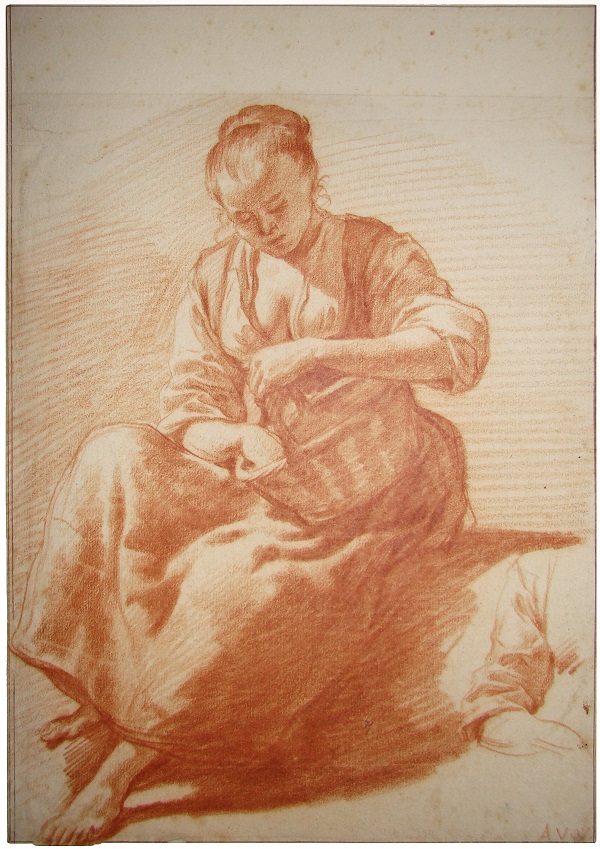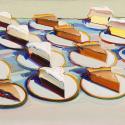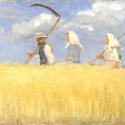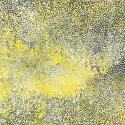Oh, those dogs: just a flick of the brush, and there they are, bursting with life. Pets, hunting dogs, companions, strays: romping on beaches, or in Dutch forests, living on farms and in imagined arcadias. Adriaen van de Velde was a 17th century master of canine depiction. His frisky creatures were bit players in hunting scenes filled with horses, carriages, people and birds ready to be let loose, all set in the verdant Dutch landscape, or by the North Sea. So clever was van de Velde at depicting domestic animals that part of his practice was to insert them into paintings by other artists.
The British have had a long love affair with the artists of the Low Countries, and great collections are housed here. But even so there is more to come, as is demonstrated by this ample show. On view are some 60 works – deceptively intriguing paintings and magnificent drawings – by the Amsterdam-born van de Velde (1636-1672). From a family of artists, he was dead by 35, but already successful, having moved away from his early training as a marine and seascape painter.
Yet although there are several score of his paintings in public collections, including the Royal Collection and seven in the National Gallery, this is his first retrospective (in collaboration with the Rijksmuseum in Amsterdam), as part of Dulwich Picture Gallery’s enterprising series of rediscovered Old Masters. His work was once well-known, and very much sought-after, as is testified by its inclusion in some of the finest public collections in the west, but he has been little known for some time, making this a charming re-evaluation.
 The show demonstrates several of the intellectual preoccupations of the time: identifiable landscapes both seaside and inland; semi-idealised farm scenes; hunting and sporting scenes (an early form of what might be recognised as golf, called colf and played on ice, and even skittles); and imagined pastorals of amorous peasants in Italianate settings.
The show demonstrates several of the intellectual preoccupations of the time: identifiable landscapes both seaside and inland; semi-idealised farm scenes; hunting and sporting scenes (an early form of what might be recognised as golf, called colf and played on ice, and even skittles); and imagined pastorals of amorous peasants in Italianate settings.
One of his best known paintings, The Hut, 1671 (pictured above right, Rijksmuseum, Amsterdam), shows a humble sheepfold in a wooded clearing, complete with a robust working woman at rest holding a basket in her lap, a mounted visitor pausing for a conversation, and the typical animal inhabitants of a farmyard clustering round. The revelation of the exhibition is the number of truly magnificent drawings, significant numbers of which are direct studies for his paintings. (Pictured below: Seated Woman with a Basket, Stitching, private collection)
That woman outside The Hut is shown in several guises. There are figure studies, nudes, entire scenes of people in landscape, and religious scenes including angels and saints, all marvellously nuanced and skilled. Compelling in their own right, van de Velde’s drawings in various combinations of black and red chalk, black, grey and brown ink, and watercolour offer special insight into his working methods, unusually detailed for an artist of this period. His religious subjects, while relatively modest in size are almost baroque in feeling – his wife was a Catholic, hardly typical in protestant Holland.
 We start, however, with the beach, notably Scheveningen just outside the Hague (and in the 19th century the subject of an improbably mesmerising diorama, permanently housed in the Hague, by the landscape artist Hendrik Mesdag, who inspired Mondrian). Indeed, an early spacious study, Figures on the Beach at Scheveningen, c. 1660 (main picture), was done in collaboration with his elder brother, Willem van de Velde the Younger, who specialised in marine scenes. Adriaen’s own early renderings of the beach treat these vistas as a kind of outdoor domesticity, from the social pleasures of the middle classes to various levels of the working classes, busy, yes, at work. Horse-drawn carts, fisherfolk, family groups, the well-dressed bourgeoisie stopping for a conversational pause with the peasants, men carrying sacks, a man with a peg leg, the beach with its steel grey sea in the distance bearing a plethora of sailing boats, all under a variable blue-grey sky with scudding clouds.
We start, however, with the beach, notably Scheveningen just outside the Hague (and in the 19th century the subject of an improbably mesmerising diorama, permanently housed in the Hague, by the landscape artist Hendrik Mesdag, who inspired Mondrian). Indeed, an early spacious study, Figures on the Beach at Scheveningen, c. 1660 (main picture), was done in collaboration with his elder brother, Willem van de Velde the Younger, who specialised in marine scenes. Adriaen’s own early renderings of the beach treat these vistas as a kind of outdoor domesticity, from the social pleasures of the middle classes to various levels of the working classes, busy, yes, at work. Horse-drawn carts, fisherfolk, family groups, the well-dressed bourgeoisie stopping for a conversational pause with the peasants, men carrying sacks, a man with a peg leg, the beach with its steel grey sea in the distance bearing a plethora of sailing boats, all under a variable blue-grey sky with scudding clouds.
Several variations of these vast views occupied the young artist, as with super attention to detail he envisioned the beach as both playground and workplace for all strata of society. It is the sense of lives as they were lived that is so captivating. And this feeling of breezy days, changing light-filled skies, people who have pasts and futures to come, permeate both van de Velde’s reality, and even his idealised scenes of heaven and arcadia. It is curious that he is described as a master of landscape: yes, but it is the inhabitants of his real and imaginary settings that give such unusual and appealing energy to his art. A re-discovery really worth making: just go and enjoy.
- Adriaen van de Velde: Dutch Master of Landscape at Dulwich Picture Gallery until 17 January 2017
- Read more visual art reviews on theartsdesk









![SEX MONEY RACE RELIGION [2016] by Gilbert and George. Installation shot of Gilbert & George 21ST CENTURY PICTURES Hayward Gallery](/sites/default/files/styles/thumbnail_125_x_125_/public/mastimages/Gilbert%20%26%20George_%2021ST%20CENTURY%20PICTURES.%20SEX%20MONEY%20RACE%20RELIGION%20%5B2016%5D.%20Photo_%20Mark%20Blower.%20Courtesy%20of%20the%20Gilbert%20%26%20George%20and%20the%20Hayward%20Gallery._0.jpg?itok=3oW-Y84i)





Add comment